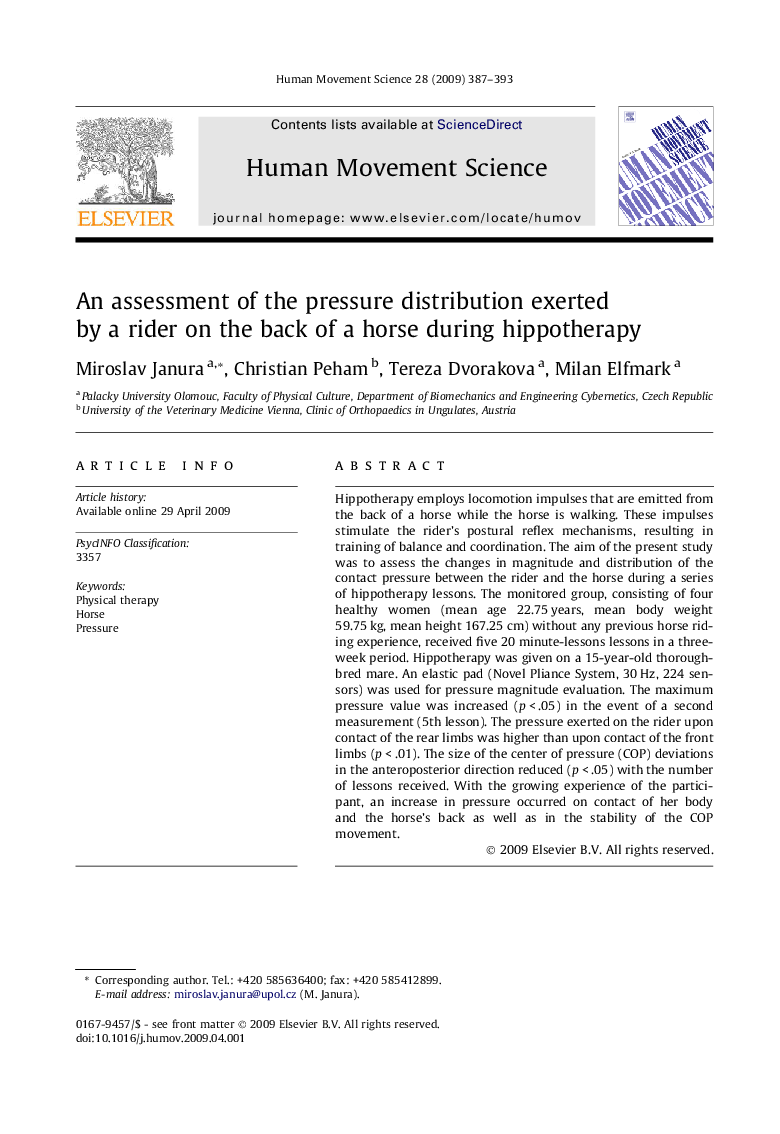| Article ID | Journal | Published Year | Pages | File Type |
|---|---|---|---|---|
| 928848 | Human Movement Science | 2009 | 7 Pages |
Hippotherapy employs locomotion impulses that are emitted from the back of a horse while the horse is walking. These impulses stimulate the rider’s postural reflex mechanisms, resulting in training of balance and coordination. The aim of the present study was to assess the changes in magnitude and distribution of the contact pressure between the rider and the horse during a series of hippotherapy lessons. The monitored group, consisting of four healthy women (mean age 22.75 years, mean body weight 59.75 kg, mean height 167.25 cm) without any previous horse riding experience, received five 20 minute-lessons lessons in a three-week period. Hippotherapy was given on a 15-year-old thoroughbred mare. An elastic pad (Novel Pliance System, 30 Hz, 224 sensors) was used for pressure magnitude evaluation. The maximum pressure value was increased (p < .05) in the event of a second measurement (5th lesson). The pressure exerted on the rider upon contact of the rear limbs was higher than upon contact of the front limbs (p < .01). The size of the center of pressure (COP) deviations in the anteroposterior direction reduced (p < .05) with the number of lessons received. With the growing experience of the participant, an increase in pressure occurred on contact of her body and the horse’s back as well as in the stability of the COP movement.
